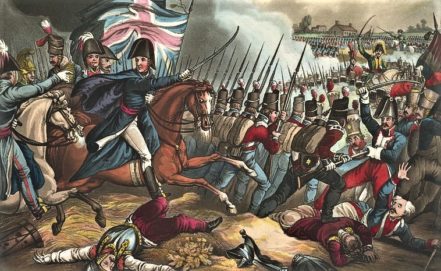
The Battle of Waterloo
The Battle of Waterloo on 18th June 1815 finally crushed the self-styled French Emperor Napoleon Bonaparte’s attempt to rule Europe. Ten years earlier, the British had defeated him decisively at the Battle of Trafalgar, but Napoleon would not lie down. Despite another defeat by the Russians in 1812 and exile in 1814, he managed to escape to France and rally the troops to support his renewed power-grab.
The British, led by Arthur Wellesley, the Duke of Wellington (1769-1852), re-entered the fray, this time with German and Dutch allies, along with a Prussian force, hastily brought together at news of Napoleon’s return. Napoleon had fewer men but was a great tactician and thought he had outwitted his opponents when he attacked the Prussians before they were able to join Wellington at Waterloo, south of Brussels.
However, Wellington was more than a match and, with the timely arrival of the re-grouped Prussians on the French flank, achieved victory after 9½ hours in which 10,000 horses and 50,000 men died. It was Napoleon’s last battle and Wellington’s too, since he was devastated by the loss of life. He and his horse, ‘Copenhagen’, were national heroes and Wellington became Prime Minister twice. Peace returned to Europe after twenty-three years of war.
(Image of illustration by W. Heath and J.C. Stadler: British Library at Flickr.com / Public domain)
